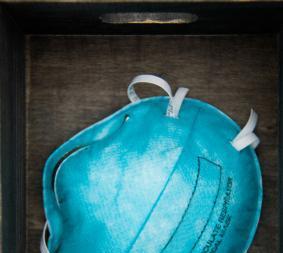There are many catastrophic events that can cause disruption to business, but more often than not its a disorganised response that causes the most serious problems. Peter Power looks at the key features of a crisis management plan
See also: What worries the government?
What are the threats that are blinking right now on your corporate radar screen but you probably are too busy to notice? Not just storms, strikes and sabotage, but some of the more pernicious dramas that are waiting to trip us up? For example, the worrying spread of terrorism, pandemic influenza on the horizon and no end of reputational crises likely to cause you to slip and fall. In other words, bombs, bird flu and banana skins.
But it’s not just the initial event that creates havoc. All too often it’s a weak, disjointed or slow management response that actually results in a catastrophe, simply because the target organisation cannot move from slow time thinking to quick time doing. It remains in a state of paralysis, or at least denial and incapable of making rapid executive decisions at the sped of the crisis, rather than the routine speed of the organisation. Sometimes crisis teams end up watching TV news to see what’s happening and are soon reduced to making mere symbolic gestures, pretending to be in charge.
However, that’s not always the case. Several organisations have taken a very different view of Crisis Management (CM). Rather than press the snooze button when we are being warned to face the probability of more catastrophes, they have prepared themselves.
Across the globe several organisations have woken up and actually increased investment potential by successfully demonstrating strong CM as a positive feature in the abrupt audit of a real drama. For example, British Midland in 1989, Commercial Union in 1992, and Nokia in 2000. In each of these cases Public Relations (PR) was recognised as being vital so that after a major air crash (Kegworth) more people ended up flying with BMI than before, a major insurer won more business by demonstrating honesty and some quick thinking in the highly competitive mobile communications market made one company grow while its rival almost perished.
In all of these cases timely, inspirational and effective CM positively enhanced the organisation’s reputation. In others, such as the Exxon Valdez or the Coca Cola contamination in Belgium, failure to properly lead and communicate did untold damage. It is not just the actions you take but the actions you are seen to take.
We live in world where the extraordinary has become commonplace and the unexpected is now regularly anticipated. Add to that hundreds of predatory News organisations, panic in the finance sector, collapse of major institutions, immediate global communications and hitherto steadfast organisations frequently discredited and ridiculed and you would be right to assume we are more vulnerable to crises than ever before. So what is the answer?
In 2008 it’s time to climb out of our silos and start to ask a few awkward questions: Can we really prevent chaos in our own crises simply because we are a bunch of nice people? Probably not.
Corporate responsibility, effective governance, duty of care and compliance with best practice and standards has changed such naïve assumptions. We now have in the UK the world’s first standard on Business Continuity (BC) and anyone who wants to ask a few awaked questions about your ability in this country to recover from a disaster will hold you up to BS2599. Not only that, but the British Standards Institute will very shortly issue a Publicly Available Specification on CM that is likely to lead to another BS standard, this time just on CM. The committee to create this has been meeting for several months and the entire programme is bankrolled by the UK Government. The same government that recently produced a ‘national risk register’ that puts the threat pandemic influenza as likely to cause the worst impact, but terrorism, electronic or other attacks, as more likely to occur.
CM should do what it implies: enable a team to rapidly become organised to make prompt decisions (notwithstanding not all the preferred data will be available). It differs from insurance because it’s about continuity of operations, whereas insurance is solely about compensation. In particular CM should:
• Identify and prepare people to quickly move from slow time thinking to quick time doing. In other words, to match and then overtake the speed of the crisis.
• Recognise the very high level of business interoperability making the knock-on effects of any crisis more rapid than ever before.
• Be regularly rehearsed. Nothing correlates more directly to how you perform in a real drama as much as how well you had coached your CM team in advance. Well planned walk-through exercises at board level are essential and this will be developed later.
“We live in world where the extraordinary has become commonplace and the unexpected is now regularly anticipated.
But a real event need not be from an outside hostile source, inside disgruntled employee, IT collapse or related to the environment. Take for example Coco-Cola who have a global ranking as the most valuable brand on earth at $70 billion US dollars. In March 2004 it launched a new brand of so-called "pure" Dasani, bottled water in the UK, but Dasani was revealed to be nothing more than London tap water taken from the mains. Then just when executives in charge of the 13 million dollar product launch must have felt it could get no worse, it did precisely that - the entire UK supply of Dasani was pulled off the shelves because a cancer-causing chemical was reportedly found in samples. .
Perhaps it’s time to look more closely at what we can and should do now against anyone or anything likely to damage your people, profits or property. How do you prepare to lead a crisis team? Here are just a few ideas:
• Identify your preferred team and work through a few realistic desk top exercises. Nothing is more important than this (and quite often a skilled outsider can get things going a lot better / more accurately / quicker than any ‘volunteer’ on the inside) - and prepare to make some changes afterwards.
• Make sure your CM plan is going to be 'crisis friendly'. By that I mean capable of being read by someone actually in a crisis, 100% up on heart beat and only able to read a clear route map that is attractive, feasible and relevant.
• Keep everyone involved. Increasingly shareholders and auditors alike are asking to audit your plans and to make audit sign offs and further investment conditional on implementation of a documented resilience structure.
• Get some professional help, not just on planning a CM team but also effective external comms. Handling the Press well can make all the difference – and void those banana skin slip ups that can crash your reputation in seconds.
Drafting your CM plans and then running a basic table top exercise and learning the lessons, will make all the difference in a real drama, so that you stay afloat rather than sink. Better still, you swim. In other words, it’s more than just reading a book about what to do. Like swimming you have to really practice in the safety of the shallow end first.
A by-product of a well researched exercise can also get very close to the real thing, as we experienced three years ago and will be featured in a BBC programme (the conspiracy files) in 2009.
Early in 2005 Reed Elsevier, an organisation specialising in information and publishing that employs 1,000 people in and around London, prepared a CM plan. With many staff travelling to work via the Underground, the planned table top exercise simulated, inter alia, incendiary devices on three trains, very similar to an IRA attack in 1992. The crisis team themselves set the date and time: 9.00am on 7 July. By coincidence, the same time as real terrorists struck.
As there had been eighteen terrorist bomb attacks on tube trains prior to 2005, choosing the London Underground was logical rather than prescient. With this in mind it was hardly surprising that Deutsche Bank had run a similar exercise a few days before and, prior to that, a multi-agency (and much publicised) exercise code-named Osiris II had simulated a terrorist attack at Bank tube station.
In short, much of the research had already been done.
Of the eight nearby tube stations that fell within the exercise's scope, three of those chosen were, by coincidence, involved in the real drama that took place on 7 July 2005, in which more than fifty innocent people were murdered. A level of scenario validation that on this occasion we could have done without.
The choice was made to abandon the exercise that day and reconvene a couple of weeks later to run the same exercise scenario. The date chosen was 21 July 2005. The same day that other terrorists struck on the Underground, albeit their bombs did not explode.
“Increasingly shareholders and auditors alike are asking to audit your plans.
An exercise that coincidently matches the real thing is not that unusual. For example, in January 2003, thirty people were injured when a London tube train derailed and hit a wall at speed. At the same time, the City of London Police were running an exercise for their central casualty bureau where the team quickly abandoned their plans and swung into action to cope with the real thing. Oddly enough, the crash occurred at Chancery Lane station: very close indeed to the sites used in the 2005 exercise scenario.
Exercise scenarios need to be highly realistic, keenly focused and well choreographed to warrant the attendance of company directors. Plans need to be stress-tested before they are signed off as completed. So what are the key points to remember?
• Set your objectives clearly
• Research thoroughly
• Confirm management levels to be tested. Strategic, tactical, operational?
• Establish a scenario based on history, probability and realism
• Use historical data, images, videos and other material to validate the scenario and increase realism
• Do not be afraid to ask for outside help. Running a cost effective and successful exercise does need a bit of professional facilitation.
• Be prepared to change your CM plans afterwards
Perhaps I should leave the last words to Charles Darwin who wrote much on the natural selection of species (but is often misquoted elsewhere):
‘It is not the strongest of the species that survives, nor the most intelligent that survives. It is the one that is the most adaptable to change.’
Does anyone disagree?
Websites
Postscript
Peter Power BA FCMI FEPS FIRM FBCI is Managing Director of Visor Consultants (UK) Limited, Piccadilly, London (email: info@visorconsultants.com . He and his team regularly help organisations prepare CM plans and deliver scenario based exercises as well as workshops, leadership courses and motivation sessions. He often appears on BBC TV and other News broadcasts and has considerable front-line experience of many real incidents. His research on crisis decision making is quoted in the UK Government (Cabinet Office) Guide on Integrated Emergency and he is a member of several committees including the Resilience Group of the UK Security Review Commission and BSI draft Crisis Management PAS/standard. He is also the primary author of the UK Gold, Silver & Bronze command system.


















No comments yet